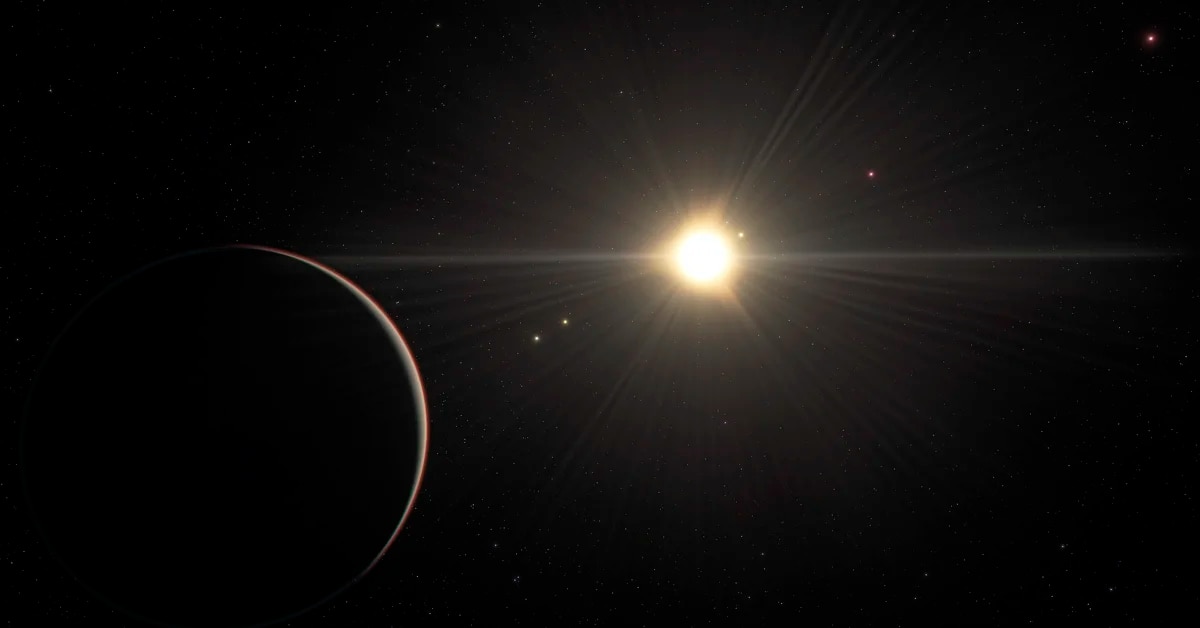:quality(85)/cloudfront-us-east-1.images.arcpublishing.com/infobae/JQDLDHYS3BBV3FIJ74LJU46274.jpg 420w,https://www.infobae.com/new-resizer/ADCifC2WLwgFIQL6cKzfNNOeZ0Y=/768x432/filters:format(webp):quality(85)/cloudfront-us-east-1.images.arcpublishing.com/infobae/JQDLDHYS3BBV3FIJ74LJU46274.jpg 768w,https://www.infobae.com/new-resizer/fR82O89inSLCgZJeQbrI1qZKbSU=/992x558/filters:format(webp):quality(85)/cloudfront-us-east-1.images.arcpublishing.com/infobae/JQDLDHYS3BBV3FIJ74LJU46274.jpg 992w,https://www.infobae.com/new-resizer/ao2KZcRwpbH1xpBqaJvitRrbGeU=/1200x675/filters:format(webp):quality(85)/cloudfront-us-east-1.images.arcpublishing.com/infobae/JQDLDHYS3BBV3FIJ74LJU46274.jpg 1200w,https://www.infobae.com/new-resizer/gscp-10b-AWvbUIf396GDnNjiFw=/1440x810/filters:format(webp):quality(85)/cloudfront-us-east-1.images.arcpublishing.com/infobae/JQDLDHYS3BBV3FIJ74LJU46274.jpg 1440w)
An international scientific team led by Portugal’s Instituto de Astrofísica do Espaço (IA), in which the Spanish Astrophysical Institute of the Canary Islands (IAC) participates, has confirmed the discovery of five exoplanets in the same planetary system. They resemble Mercury.
It is a system Three super-Earths and two super-Mercuries Around the cool star HD 23472, the IAC said in a statement, in which Institute for Astrophysics and Space Sciences (IA) researcher Susanna Barrows, who led the study, noted that they wanted to observe this planetary system. Combination of minor planets.
In particular, they wanted to study whether or not the existence of an atmosphere due to the star’s radiation was related to the evaporation of its outer layers.
But, “surprisingly,” they discovered that the system contains three super-Earths with significant atmospheres and two supermercuries, the closest planets to the star, he points out.
The system has five planets, three of which are less massive than Earth The lightest exoplanets whose masses have been measured by the radial velocity method.
This technique detects small variations in the star’s speed along the line of sight due to the induced motion of an orbiting planet on it.
The discovery was made possible thanks to the high precision of the ESPRESSO spectrograph installed on the Very Large Telescope (VLT) of the European Southern Observatory (ESO) in Chile.
:quality(85)/cloudfront-us-east-1.images.arcpublishing.com/infobae/UY2JS2ARPJFGXKJMTYCG4S3XIQ.jpg 992w)
As explained by the IAC, super-Earths and supermercuries are high-mass counterparts of Earth and Mercury, and are distinguished by their composition in that supermercuries have a higher iron content, particularly in their cores.
These types of exoplanets are extremely rare, in fact only eight are known, including the two newly discovered onesincluded in the report.
Mercury is one of the densest planets in the Solar System, and the reason why it has a relatively larger and more massive core than Earth and other planets is unknown.
The general belief is that a body of higher dimensions impacted against the planet and stripped off much of its original mantle.
Another theory is that because Mercury is a hot planet, its high temperature may have vaporized part of its crust.
Discovery of other dense planets like Mercury around other stars key code To understand the formation of these types of objects, IAC explained.
He claims to have precisely discovered two supermercuries instead of one in the same planetary system. gives scientists a clear picture.
:quality(85)/cloudfront-us-east-1.images.arcpublishing.com/infobae/7HJYXNRQ7FHC5DH4ZBM3Q336DM.jpg 420w,https://www.infobae.com/new-resizer/pUEm4nI9FnUrRs-IRZZtO8wmtJE=/768x432/filters:format(webp):quality(85)/cloudfront-us-east-1.images.arcpublishing.com/infobae/7HJYXNRQ7FHC5DH4ZBM3Q336DM.jpg 768w,https://www.infobae.com/new-resizer/uwJPxYZsoyIvZKuww6wvdCPyMuA=/992x558/filters:format(webp):quality(85)/cloudfront-us-east-1.images.arcpublishing.com/infobae/7HJYXNRQ7FHC5DH4ZBM3Q336DM.jpg 992w,https://www.infobae.com/new-resizer/-4MeEK_86pNXH3MQ3_ghjtaLkc0=/1200x675/filters:format(webp):quality(85)/cloudfront-us-east-1.images.arcpublishing.com/infobae/7HJYXNRQ7FHC5DH4ZBM3Q336DM.jpg 1200w,https://www.infobae.com/new-resizer/H8IrUupvMlMbipFEVP4AYQvEGlY=/1440x810/filters:format(webp):quality(85)/cloudfront-us-east-1.images.arcpublishing.com/infobae/7HJYXNRQ7FHC5DH4ZBM3Q336DM.jpg 1440w)
“For the first time, using the ESPRESSO spectrograph, we have discovered a system with two supermercuries, which helps us understand how these planets form,” said Alejandro Suárez, an IAC researcher and co-author of the study.
The chance of a large impact creating a supermercury is very remote, so two large impacts in the same system are unlikely, he said.
To understand how these two supermercuries formed, it is necessary to continue to characterize the composition of these planets,” commented Joanne González, a researcher at the IAC and co-author of the study.
“The future Very Large Telescope (ELT) and its first-generation high-resolution spectrograph, ANDES, will provide the sensitivity and precision needed to study the composition of its surface and its potential atmosphere for the first time.” He insisted.
For the research team, this is the first step towards their ultimate goal: finding another Earth.
The presence of atmospheres allows us to understand the formation and evolution of the planetary system, and has implications for planetary habitability.And Barrows indicated that they would like to extend this type of study to planets with longer periods of more favorable temperatures.
(with information from EFE)
Continue reading:





:quality(85)/cloudfront-us-east-1.images.arcpublishing.com/infobae/KTKFKR763RBZ5BDQZJ36S5QUHM.jpg)